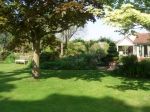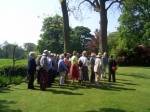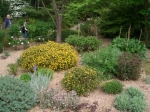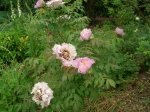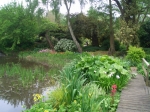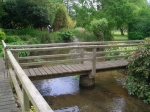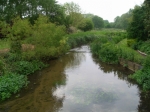
















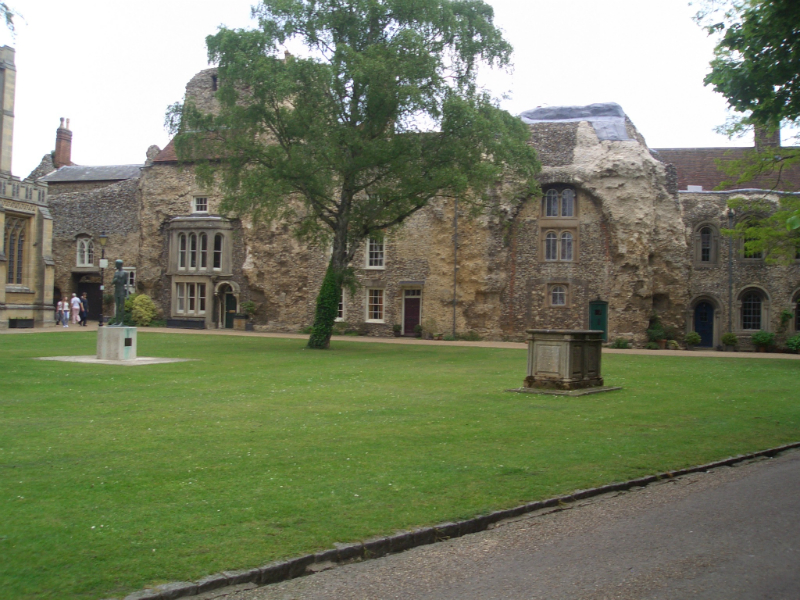

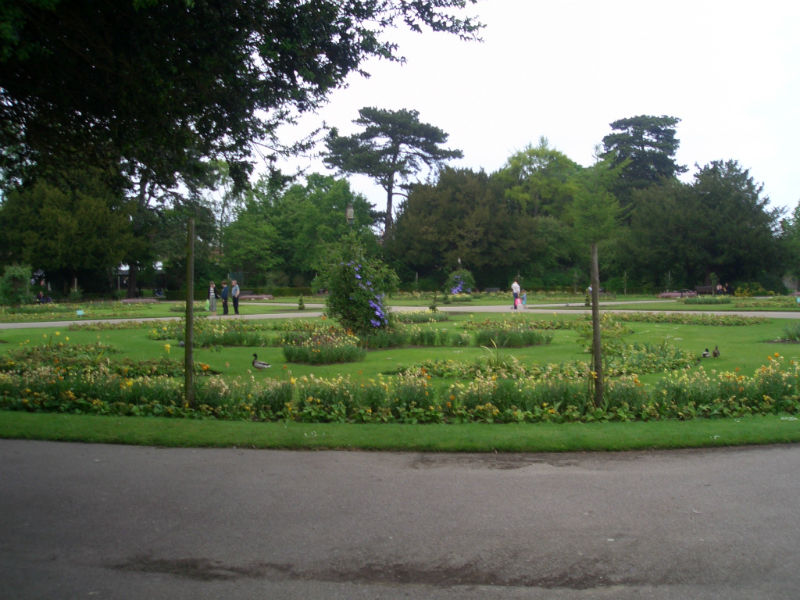
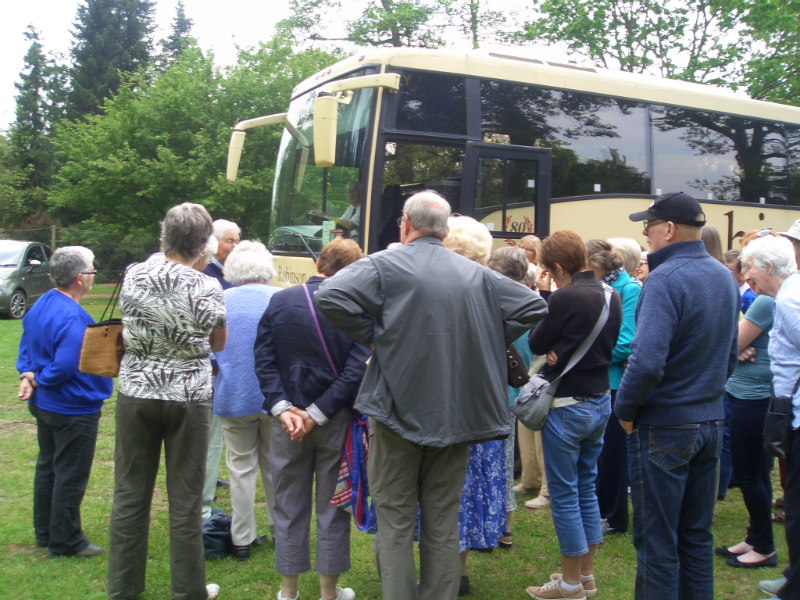
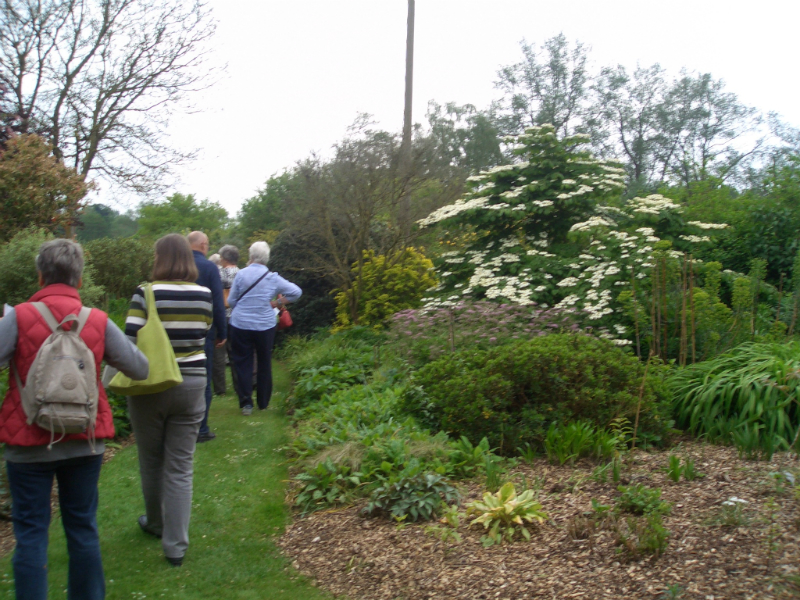
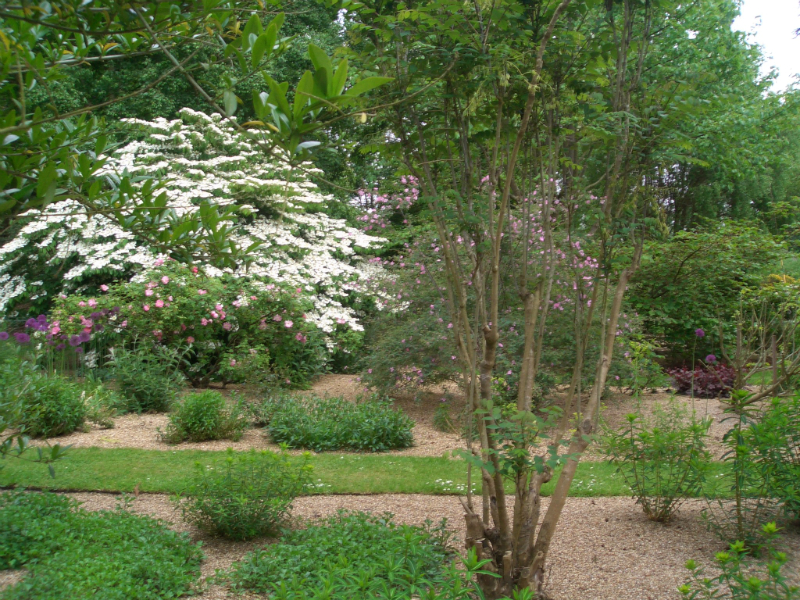
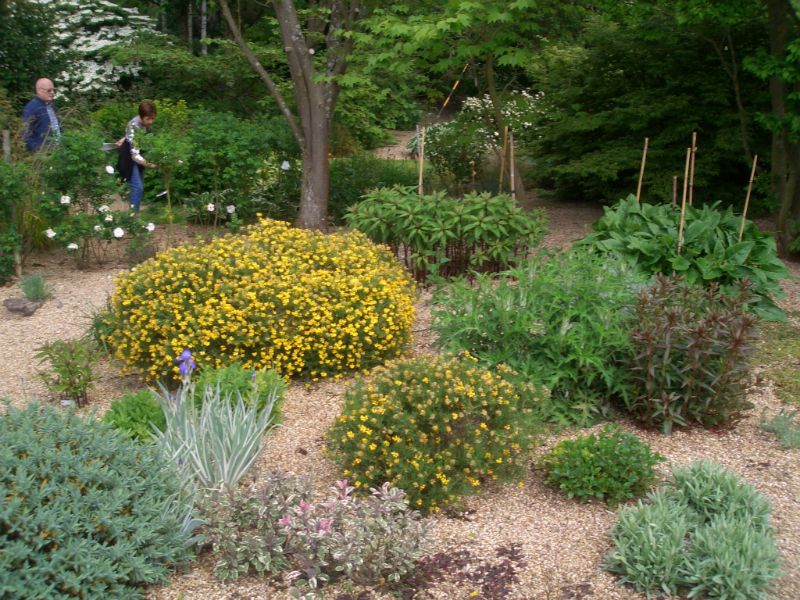


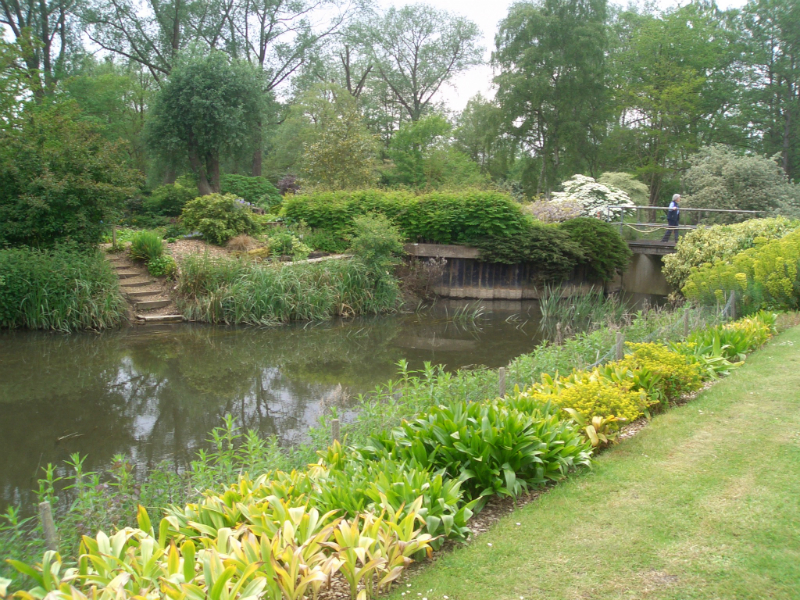
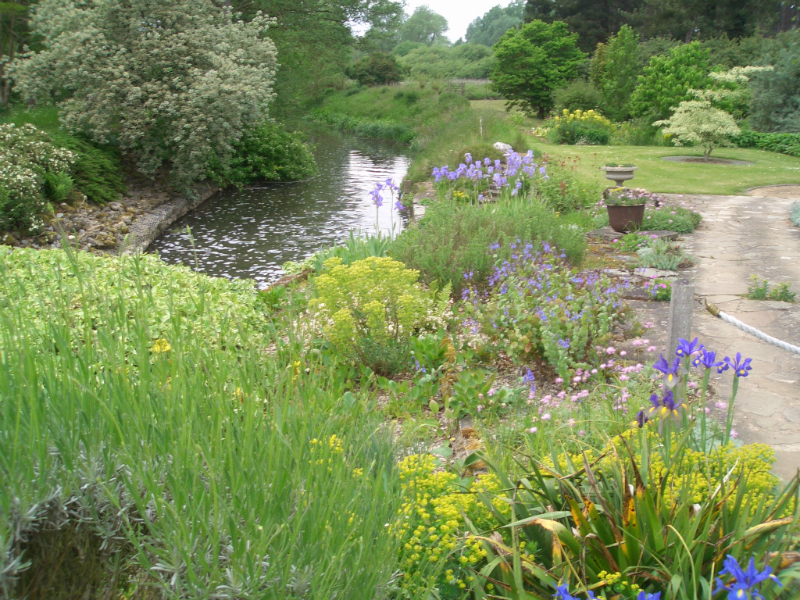
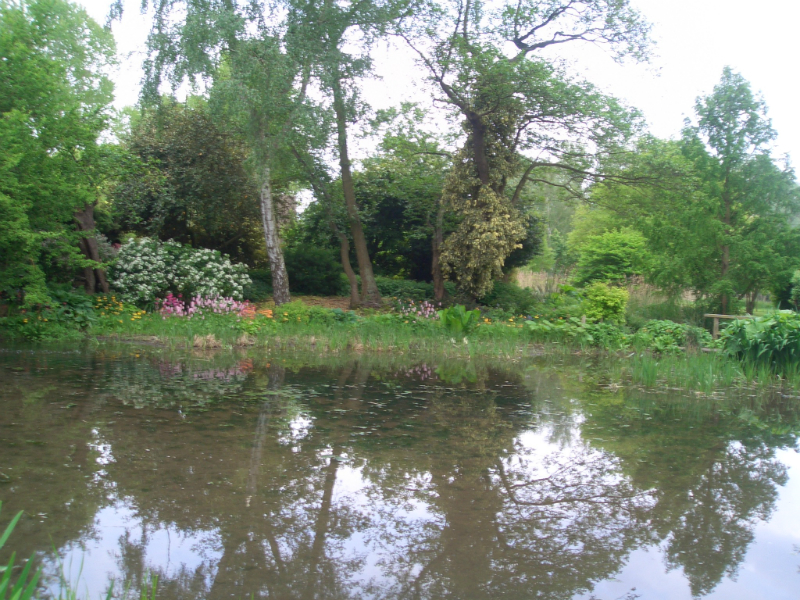


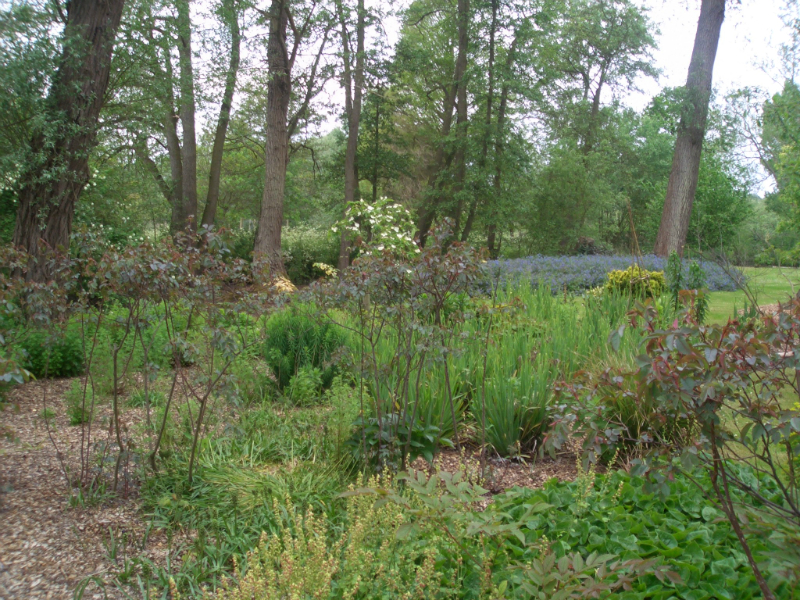




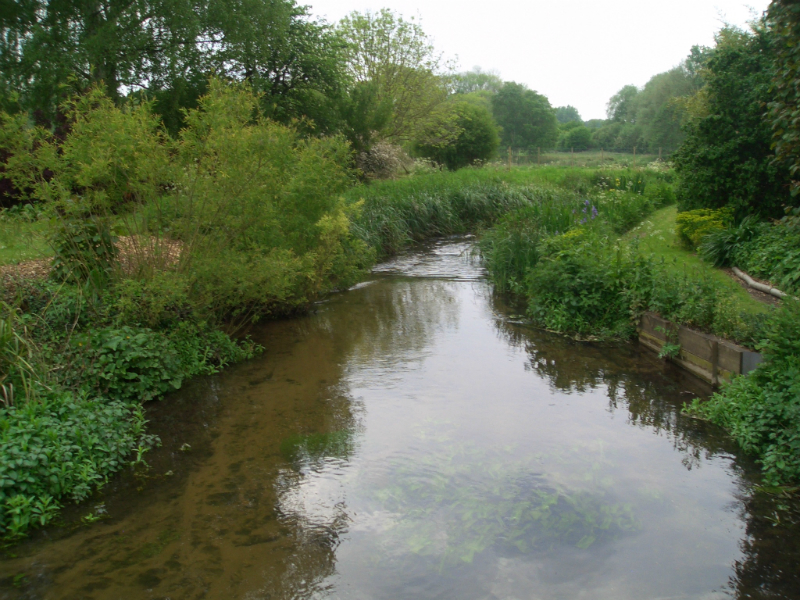
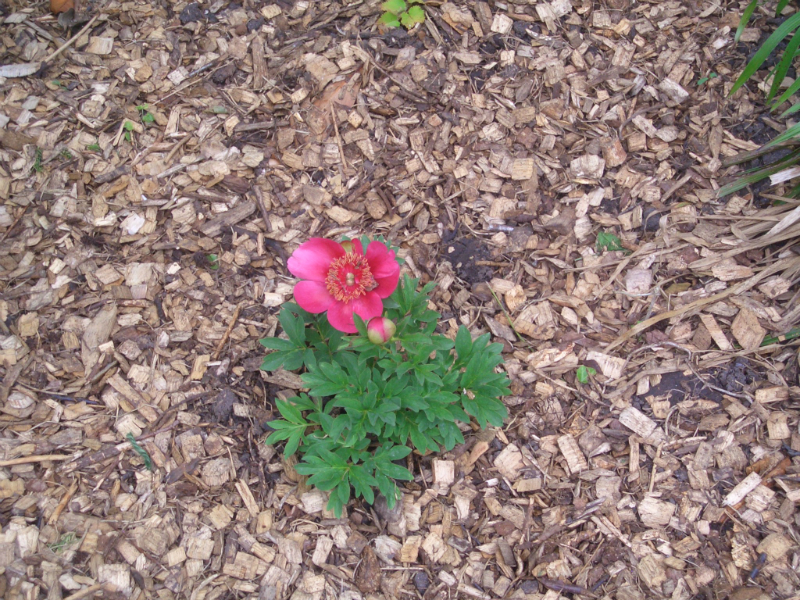
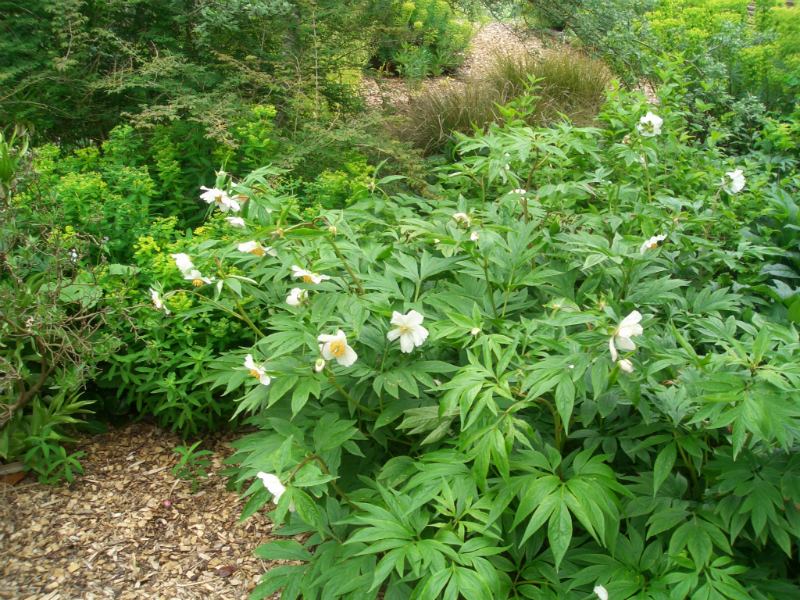



Visit to Gardens near Bury St Edmunds – May 16th 2014
Luck was with us for this trip. The sun was shining and it was pleasantly warm. Half the work force of the country must have taken the day off in the good weather as we made record time along the A14 towards Bury.
Our first stop was at the Moat House, Little Saxham. The turning to the garden was well disguised as a farm track so it was lucky that there was a good mobile phone signal and space for our large coach to turn round once we’d received directions from the owners, Suzanne and Richard Mason. They had taken over the garden 20years ago when it boasted only one small herbaceous border. As their gardening knowledge grew they added island beds, a sunken garden and a small arboretum. Despite the garden suffering from the dreaded Honey Fungus there were beautiful trees casting shadows in the bright sunlight. The beds were a mixture of shrubs and herbaceous – all so lush and healthy that no one would know they had a problem. The area near the house had a stepped box hedge round it. There were bantam chickens and two big friendly dogs to admire and tea and scones to refresh us. A perfect start to the day!
Our lunch break in Bury St Edmunds was too short to do justice to this ancient town though many of the group found time to walk round the Abbey Gardens before we moved on to Fullers Mill Garden, hidden in the Kings Forest. This was a complete contrast to the more formal Moat House. Bernard Tickner, the creator of this seven acre informal garden over 50 years, said he disliked straight lines so paths and borders had to be curved. With the slow flowing River Lark cutting through the garden there were opportunities for unusual plant combinations because there were all soil types except acid. There are at least seventy varieties of lily in the areas that are gravel over a high water table giving them the good drainage but moisture that they need. Despite being only a week away from his 90th birthday Mr Tickner spend the whole afternoon in the garden with us answering questions and naming plants. He had spent a day the previous week being filmed in the garden ready for a slot in the Chelsea Flower show coverage by the BBC.
There were so many stunning plants in the garden that it would be impractical to list them all. There were many varieties of Euphorbia with huge clumps of E. Stygiana threading through the beds. E. ‘Redwing’ was discovered here and royalties from Notcutts amount to thousands of pounds each year. E. ‘Blackbird’ is another introduction from the garden. Another plant unique to the garden is the perennial honesty ‘Honour Bright’. Clumps of Cedric Morris introduced Iris were among my favourites in the garden along with the many paeonia, especially P. rockii and p. steveniana; the Himalayan primroses around the mill pond and Galactites tomentosa, a pink flowered thistle from Crete that formed attractive but spiky clumps under the trees. Bernard Tickner said his friends said they were just like him! (Charming, not spiky was my impression of him).
At the end of a lovely day many of us expressed the intention of revisiting this stunning garden. It had the peace of the river with the excitement of the rushing weir, hidden corners and above all, an immensely knowledgeable, charming owner who has given the garden to the gardening charity Perennial to ensure its survival.





